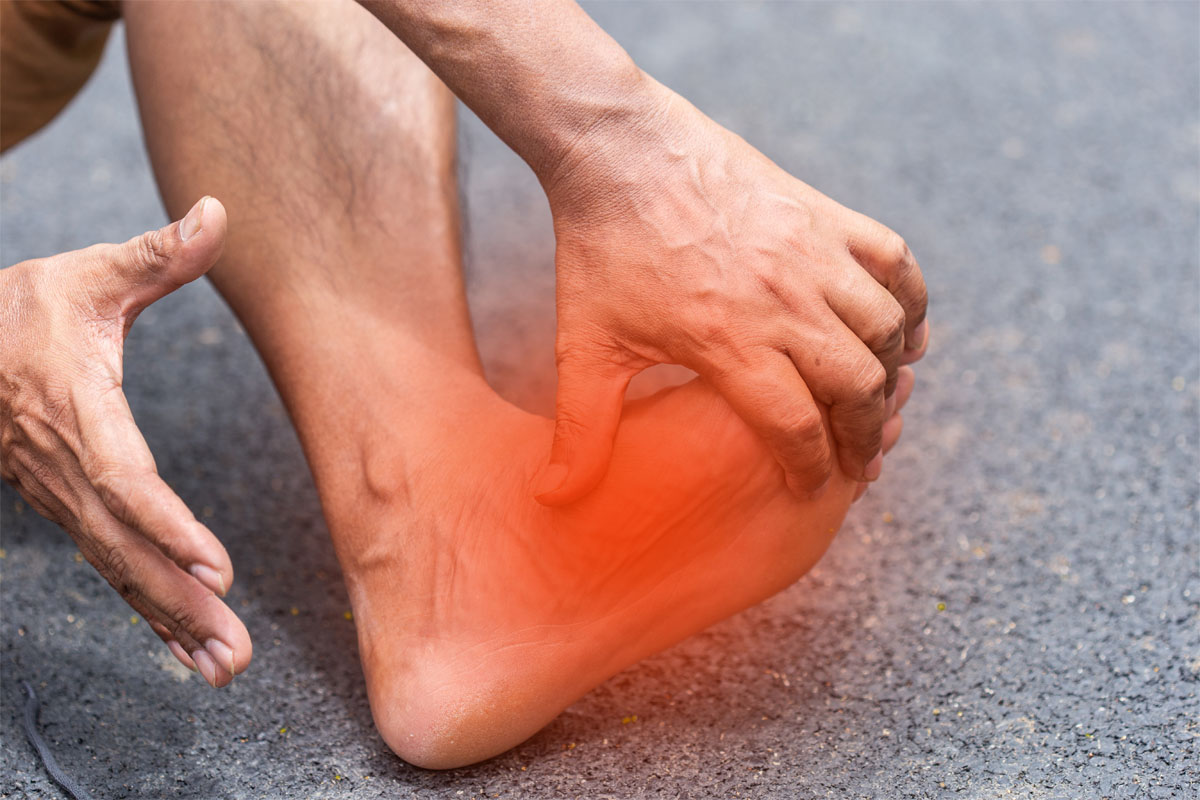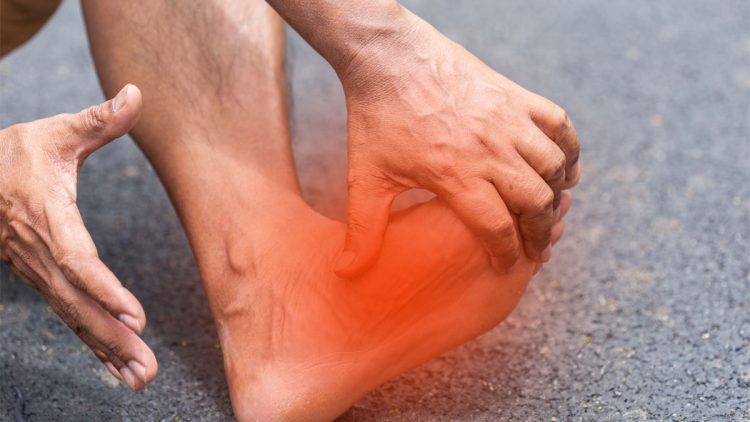What is Plantar Fasciitis?

The plantar fascia is a dense membrane underneath the feet. It attaches the calcaneus (heel bone) to the toes, creating the foots arch. When this membrane becomes painful or inflamed, it is referred to as plantar fasciitis.
Causes
Swelling happens when the dense band of membrane underneath the foot (fascia) is overextended or overworked. This can be agonizing and make walking more challenging.
You are more prone to pick up plantar fasciitis if you:
- Have foot arch issues (both high arches and flat feet)
- Run great distances, downhill or on irregular surfaces
- Are overweight or gain weight abruptly
- Have a firm Achilles tendon (the tendon attaching the calf muscles to the heels)
- Are wearing shoes with inadequate arch support or softer soles
- Alter your activity levels
Plantar fasciitis is seen in men as well as women. It is one of the most typical orthopedic foot grievances.
This condition was commonly believed to be initiated by a heel spur. Nevertheless, research has established that this isn’t the case. Through x-ray, heel spurs been observed in individuals with, as well as without, plantar fasciitis.
Symptoms
The most typical symptom is pain and rigidity underneath the heel. The heel pain could be dull or severe. The bottom of the foot could also burn or ache.
The pain is typically worse:
- In the morning when you are taking your first steps
- Following standing or sitting after awhile
- When going up stairs
- Following intense activity
- Through walking, running, and jumping activities
The pain could develop gradually over time or come on abruptly following intense activity.
Exams and Tests
The specialist is going to perform a physical exam. This may show:
- Pain on the bottom of your feet.
- Pain along the sole of the feet.
- High arches or flat feet.
- Moderate foot redness or swelling.
- Stiffness or rigidity of the arch underneath your foot.
- Stiffness or tension with your Achilles tendon.
X-rays may be taken to leave out other issues.
Treatment
Your specialist is going to often recommend these steps first:
- Ibuprofen (Advil, Motrin) or acetaminophen (Tylenol) to reduce pain and inflammation.
- Physical therapy with focus on foot and heel stretching exercises.
- Night splints to wear when sleeping for stretching the foot.
- Resting as much as possible for a minimum of a week.
- Wearing shoes with proper support and cushioning.
You also can put ice on the painful area(s). Do this at a minimum of two times a day for ten to fifteen minutes, more frequently in the initial couple of days.
Should these treatments not work, your specialist may suggest:
- Wearing a boot cast, kind of like a ski boot, for three to six weeks. It can be taken off for bathing.
- Custom-fitted shoe inserts (orthotics).
- Steroid injections into the heel.
Occasionally, foot surgery is required.
Prognosis
Non-surgical treatments most of the time improve pain relief. Treatments could last from several months up to two years before symptoms improve. A lot of people recover within six to eighteen months. Seldom, surgery may be required to alleviate the pain.
Mobility Center In Mesa, Arizona
Mobility Center has been proudly serving the entire Phoenix, Arizona area since 1975 with the finest in mobility aids, scooters, wheel chairs, lifts and support equipment. Visit our convenient location to see the products and receive the individual attention that you deserve. Our service area includes Mesa, Apache Junction, Tempe, Chandler, Scottsdale, Phoenix, Glendale, Surprise, and Sun City. More Articles About Senior Living
- Best Walking Canes
- What Is a Rollator?
- 10 Common Mobility Scooter Problems
- Wheel Chairs Near Me
- Why Might An Older House Have More Safety Risks Than A New One?
- Types Of Mobility Aids
- How Much Does a Stair Lift Cost?
- Balance Exercises For Seniors
- 65 Quotes About Getting Older
- Elderly Home Safety Checklist
- The Best Places To Retire In Arizona
- Wheel Chairs For Sale In Phoenix, Arizona
- How Much Does A Wheelchair Cost?
- Top 5 Best Walkers For Seniors

